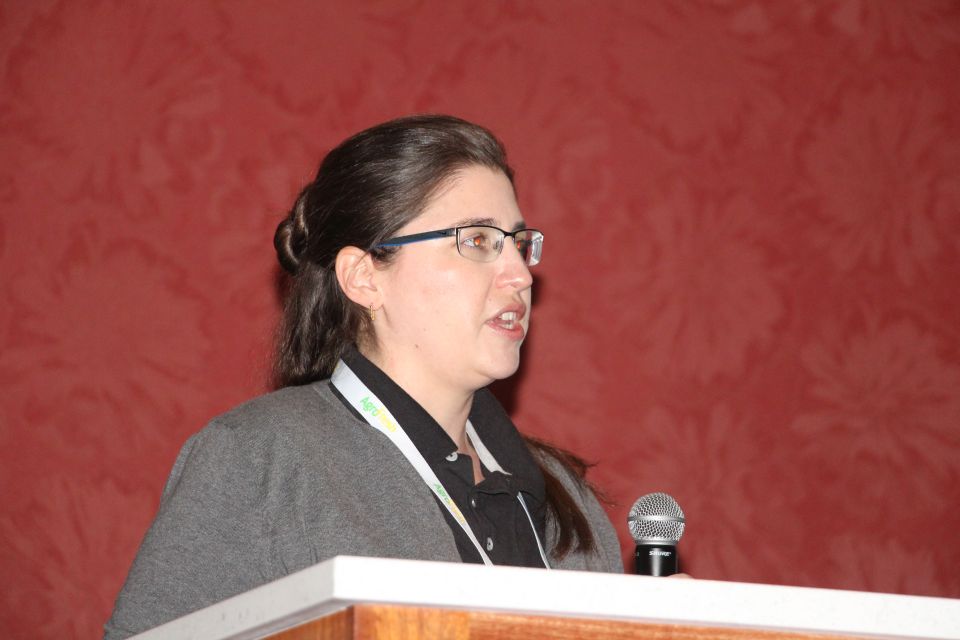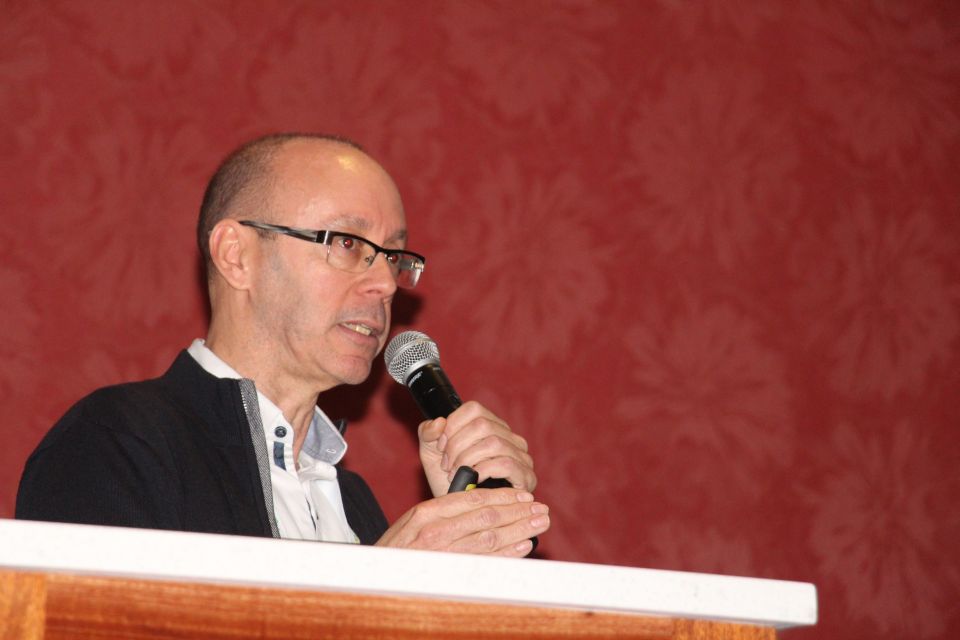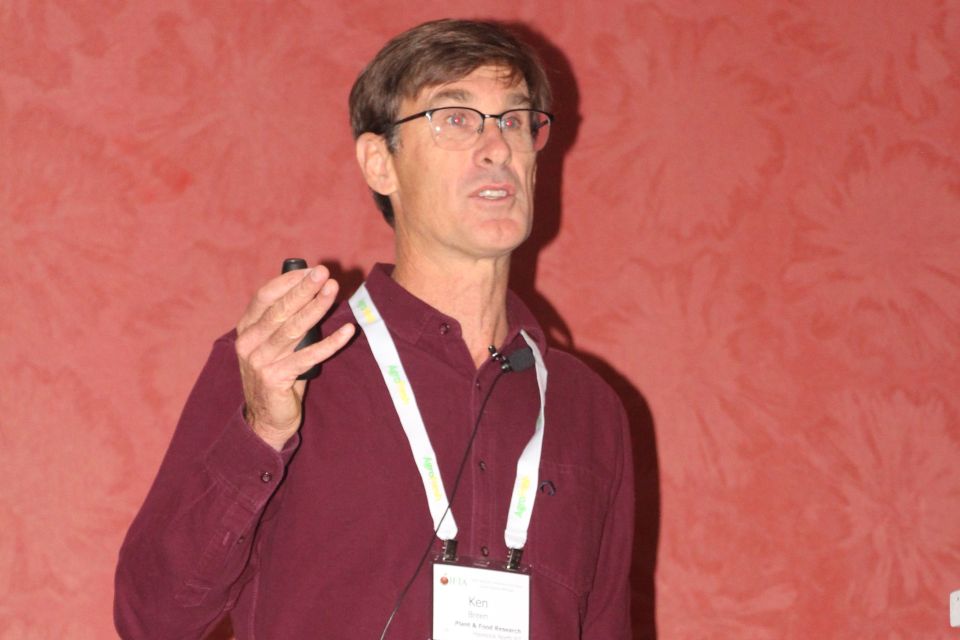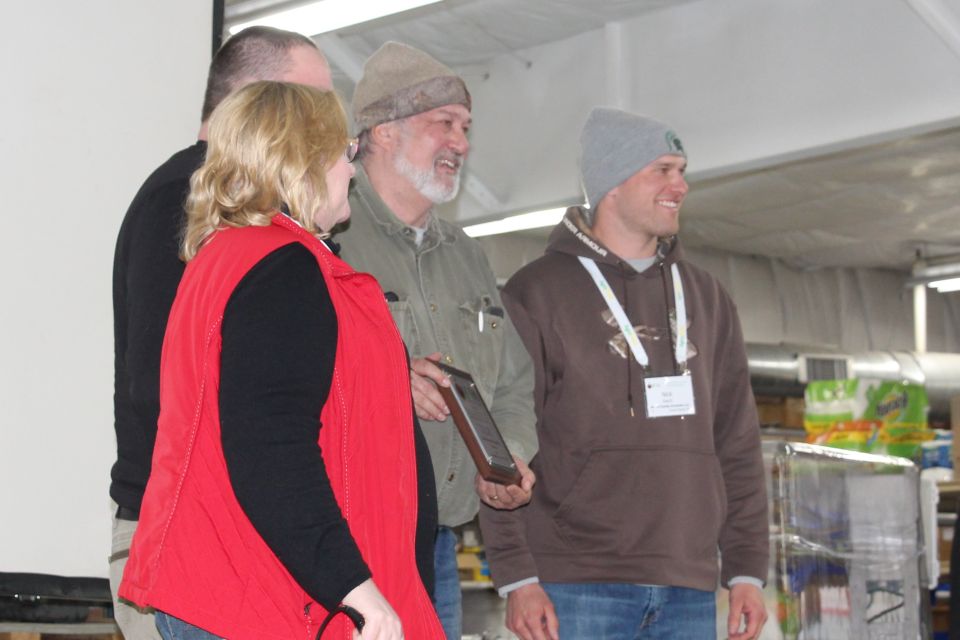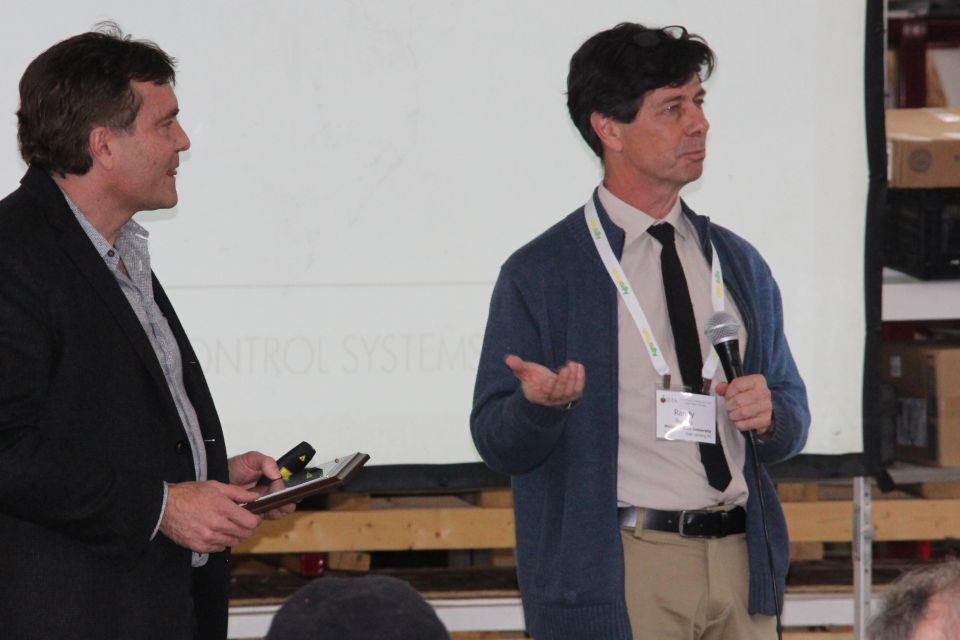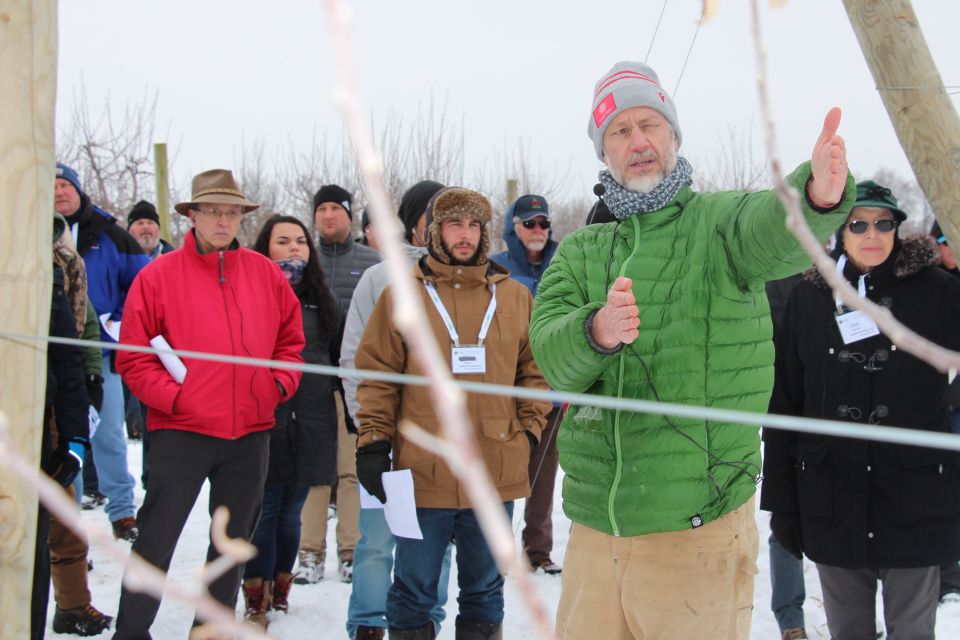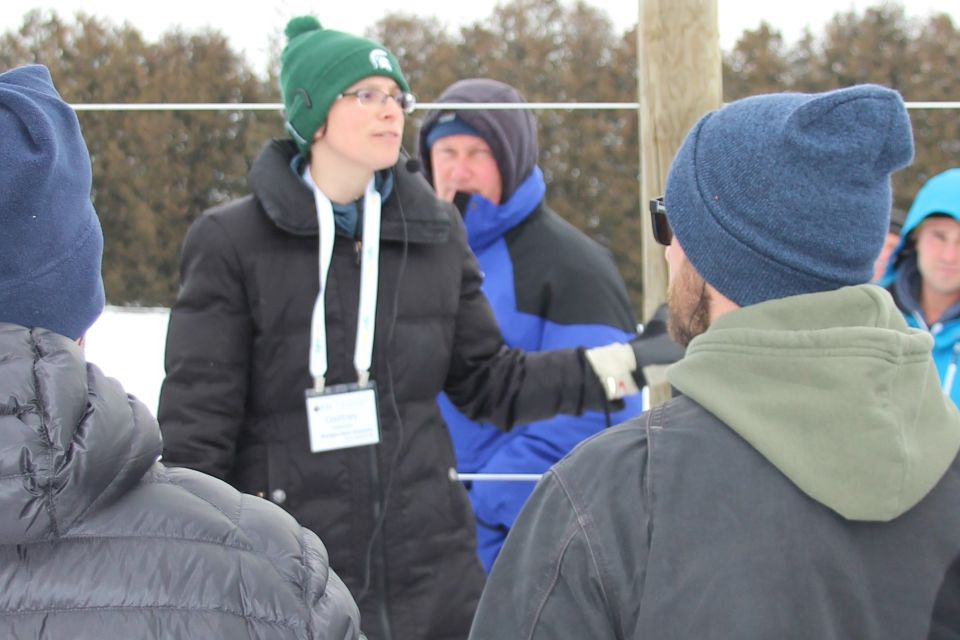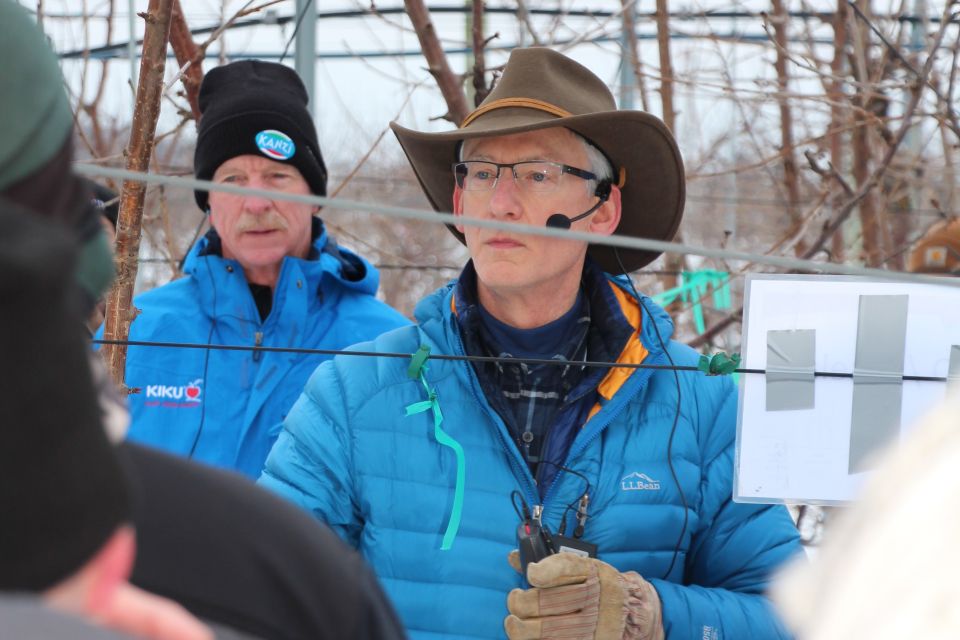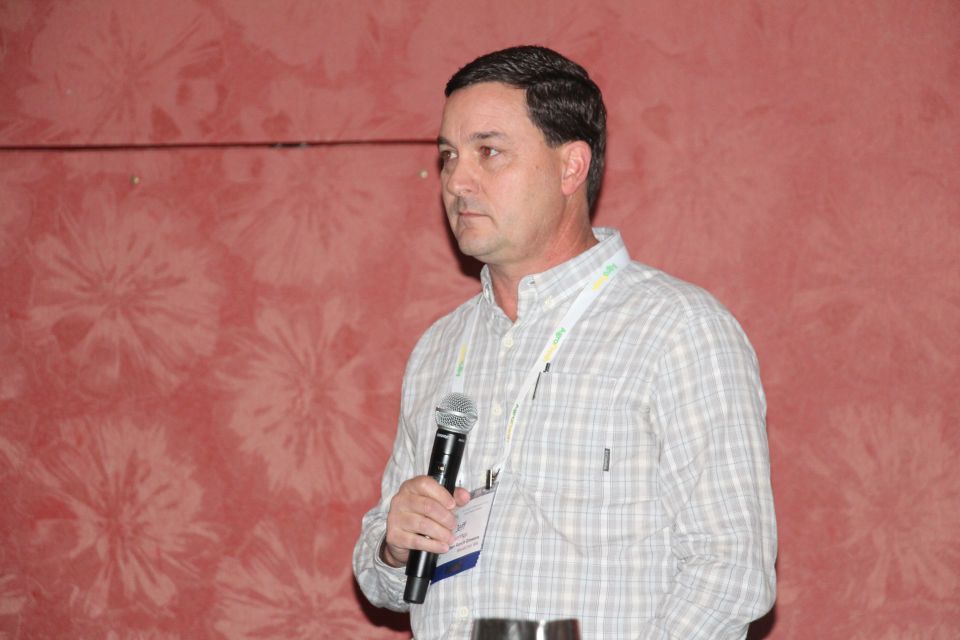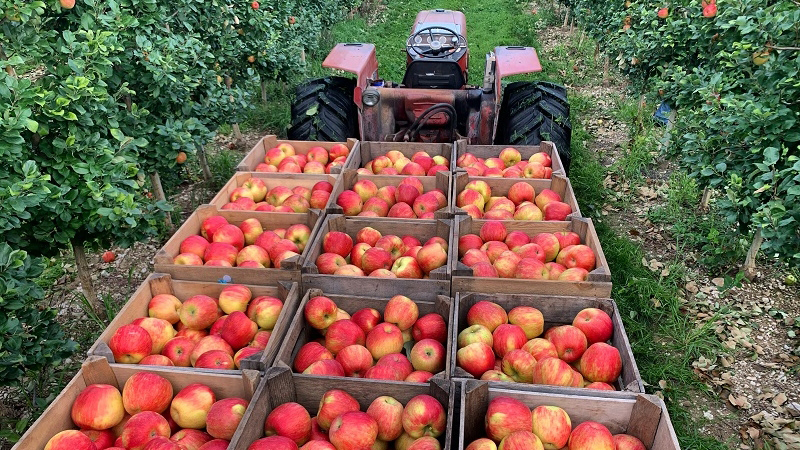Living After Midnight With Fire Blight
If it’s 2 a.m., the only activity going on in your orchard might be fire blight bacteria having too good of a time. In turn, proactive growers should spray their apple trees the evening before the party rather than the morning after.
“We can get a jump from 1,000 (bacterial) cells to a million cells — a tremendous amount of population growth — in one day,” George Sundin, a Professor with Michigan State University (MSU), said while presenting at the recent annual meeting of the International Fruit Tree Association.
“It becomes really important to manage these populations. Once they get to these heights, infection is very easy to happen.”
One of two issues that should concern apple growers, according to Sundin, is a wider-than-expected range of temperatures in which fire blight might thrive. While many studies have indicated that 70 degrees is “optimal” for the advancement of the disease, at least one study cited by Sundin indicated that cooler temperatures, when preceded by warmer temperatures, can be conducive as well.
“We had temperatures in the 60s for highs, and, on the day that we got the best growth, the high temperature was only 54°F,” Sundin says. “So, if cells are in the trees, in the flowers, they can grow even under these cooler temperatures. The risks of blight remain really high if you’ve had warm weather leading into cooler weather.”
WAKEUP CALL
Intrigued as to what might be the exact times of day in which the spread of fire blight might be most explosive, Sundin and his MSU student researchers conducted their own experiment last spring. They recorded samples every few hours during a 70-degree day in Northwest Michigan.
“We didn’t really get a lot of growth [during the day], but then, overnight, that’s when the growth happened,” Sundin says. “Ultimately between 3 p.m. and 8 a.m. the next morning, we went from a thousand to a million (cells). Most of it seemed like it was happening overnight.”
In follow-up, one of Sundin’s students took one for the team and pulled four separate graveyard shifts in the orchard. She tested at 6 p.m., 10 p.m., 2 a.m., 6 a.m., and 10 a.m.
“What she found is that the growth is very consistent — it happened between 10 p.m. and 2 a.m.,” Sundin says. “[So], while she was in the bar waiting for the 2 a.m. sample, the bacteria were busy.”
Jokes aside, what happens, Sundin says, is that the obvious drop in temperatures is accompanied by the formation of dew. “There is pre-moisture that is really enhancing the growth of the bacteria,” he says. “So, every night you’ve got the potential of jacking up the populations in your orchard.”
How should growers react?
“When we’re thinking about control in spring, we’ve got to start thinking about spraying in the evenings before these really large bursts of growth happen,” Sundin says. “That’s going to be better than coming in in the morning once this has already reached populations where we’re at really high risk for infection. … And once we start getting shoot blight, that’s when epidemics really get rolling.”
FIGHTING FIRE BLIGHT
Three antibiotics are available to control blossom blight, according to Sundin: two “excellent ones,” streptomycin (Agrimycin and generics) and Kasumin, as well as oxytetracycline (Mycoshield, FireLine), which, in more humid climates, such as Michigan, “doesn’t seem to work as well,” he says.
Streptomycin or Kasumin should be used when fire blight prediction models indicate an Epiphytic Infection Potential (EIP) value of more than 70, Sundin says. He recommends a maximum of three sprays per bloom period.
“I know in the U.S. we can use more applications than in Canada, but you don’t want to overuse either of these antibiotics for fear of resistance developing in the pathogen,” he says.
Regarding biological treatments such as Serenade Opti, Serifel, Stargus, and Double Nickel, Sundin says “only about 50% control” is achieved. They should be used, he adds, only when the EIP value is between 40 and 70.
“If the EIP number is greater than 70, that’s when you need the big guns,” he says, referring to streptomycin and Kasumin.
APOGEE EFFECT
The plant growth regulator prohexadione-Ca (Apogee) provides excellent control of shoot blight, Sundin says. Approximately two weeks after application, growers should see a reduction in shoot growth, which, in turn, promotes the control of shoot blight. After the initial application, a petal fall of king blooms will occur when the shoots are 1 to 3 inches long.
“When you have a really vigorous-growing shoot, the cell walls are super thin. That’s why the infection of those leaves and shoot tips is so easy for the (fire blight) pathogen,” Sundin says. “Apogee provides a structural barrier that prevents the pathogen from infecting these cells. The cell walls (become) too thick.”
Of course, growers need to resist the overuse of the PGR. With that in mind, Sundin’s staff tested various rates of Apogee on ‘Gala’ trees, in some cases while mixed with the plant activator Actigard.
“We physically inoculated shoots that we had treated with these different Apogee/Actigard treatments, so they were definitely going to be infected,” Sundin says. “The question was: What is the length of that shoot infection?”
By themselves, Apogee at 2 ounces and Actigard at 1 or 2 ounces “weren’t doing anything,” Sundin says. “But when we put them together — either 2 ounces of Apogee plus 1 ounce of Actigard or 2 ounces plus 2 [ounces] — we get excellent control. Basically, all we see of that infection is where we inoculated with, where we knew we were going to get infection. But it didn’t really spread.”
Sundin took his testing to the field last year. Unfortunately, he didn’t get as much disease as he had wanted — only 19% infection on untreated control. Still, when looking at the results, the top three treatments, numerically, were those that combined Apogee and Actigard.
“The combos are very promising,” Sundin says. “The effect on growth was not so negative that you do not want to use. And the effect on shoot blight has been quite excellent.”










